Tool - CT Guidelines - Modality Selection_08Sep2015
advertisement
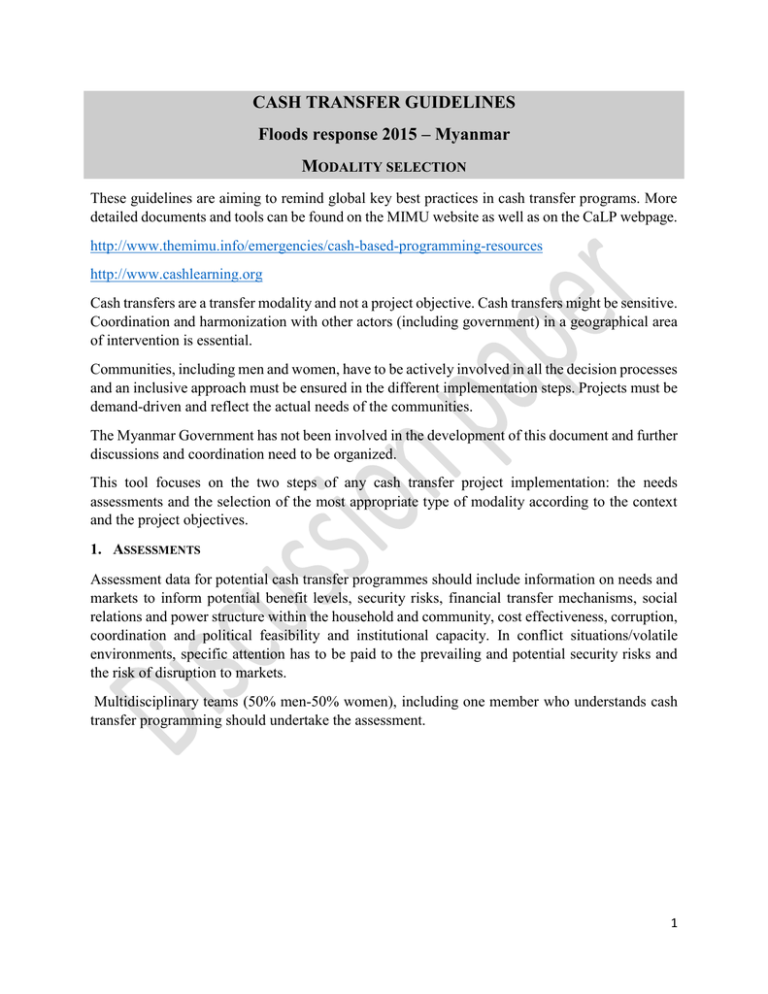
CASH TRANSFER GUIDELINES Floods response 2015 – Myanmar MODALITY SELECTION These guidelines are aiming to remind global key best practices in cash transfer programs. More detailed documents and tools can be found on the MIMU website as well as on the CaLP webpage. http://www.themimu.info/emergencies/cash-based-programming-resources http://www.cashlearning.org Cash transfers are a transfer modality and not a project objective. Cash transfers might be sensitive. Coordination and harmonization with other actors (including government) in a geographical area of intervention is essential. Communities, including men and women, have to be actively involved in all the decision processes and an inclusive approach must be ensured in the different implementation steps. Projects must be demand-driven and reflect the actual needs of the communities. The Myanmar Government has not been involved in the development of this document and further discussions and coordination need to be organized. This tool focuses on the two steps of any cash transfer project implementation: the needs assessments and the selection of the most appropriate type of modality according to the context and the project objectives. 1. ASSESSMENTS Assessment data for potential cash transfer programmes should include information on needs and markets to inform potential benefit levels, security risks, financial transfer mechanisms, social relations and power structure within the household and community, cost effectiveness, corruption, coordination and political feasibility and institutional capacity. In conflict situations/volatile environments, specific attention has to be paid to the prevailing and potential security risks and the risk of disruption to markets. Multidisciplinary teams (50% men-50% women), including one member who understands cash transfer programming should undertake the assessment. 1 Targeted communities should be involved in every stage of the programming planning process. Disasters and humanitarian crises have been drivers of cash transfers in Myanmar: in Rakhine as a response to Cyclone Giri (2010); in the Delta as a response to Cyclone Nargis (2008) and in the Dry Zone as a response to the Magwe flash floods (2011), including cash assistance provided by various government stakeholders and development partners (DPs). Unconditional cash transfers for emergency response have had the objective of providing short- to medium-term relief to affected households, enabling food security (e.g. by complementing food transfers). This contributes to decreasing negative coping strategies of households such as indebtedness and cutting down on food consumption. Understanding households coping strategies is therefore important to inform program design elements such as frequency of payment. 2. MODALITY SELECTION Programme objectives must relate to specific needs identified. Cash transfers do not necessarily replace other forms of assistance. Cash is one of the mechanisms that can be used for providing support to those in needs. Cash can complement in-kind distributions and other activities and must be demand driven. A. Selection of modality 2 3 B. Selection of the most appropriate form of cash transfer Cash transfers Cash transfers (unconditional or conditional) are the best option if the objective is to ensure all households basic needs are met (i.e. households affected by disaster differently) as they allow flexibility in what beneficiaries choose to purchase to ensure all. The selection between unconditional and conditional cash transfers is usually time driven. Early stages of response may call for blanket support in affected areas on an unconditional bases. Unconditional if: - Response calls for simple and flexible modalities of support that are easy to distribute on a blanket manner in a well-known geographic area Markets are functioning but people are unable to purchase items they need due to shortage of income The risk of inflation is low Conditional if: - - It is important to ensure that targeted groups complete certain actions (i.e. rebuild their homes, keep children in school, attend training, access needed medical services) that can support their longer term recovery Large sums have to be distributed and accounted for in order to meet the identified needs The risk of inflation is low Advantages Disadvantages Quick to distribute and circulate in small scale Difficult to monitor usage after transfer programs (If the cash transfers have been implemented based on a proper needs assessment, the use Low administration cost compared to other of cash will be on line with the project modalities objectives) Provides flexibility for beneficiaries to meet their needs Stimulates local economic recovery in disaster-affected areas Perception of anti-social uses of cash (Evidences are scarce compared to the extent of the use of CTs worldwide, including in Myanmar) Limited payment systems can hamper large scale cash transfers (case in Myanmar) Misuse of funds within the HH 4 Vouchers If: - It is important to ensure that people purchase a certain type of goods Targeted groups cannot carry cash around with them safely It is important to ensure basic needs are met even in markets with extreme price and availability fluctuation or inflation The program aims to achieve a specific goal such as improving nutrition or agriculture production Trade in a particular commodity needs to be encouraged Advantages Can be directed towards specific items to purchase Disadvantages High administration costs and time consuming (4-6 weeks to organize) Security risks are sometimes lower than for CFW or cash transfers The program needs to monitor and ensure supply along program duration, which adds to program costs Voucher exchange can be monitored Risk of forgery Agency can assume hardships associated with minor inflation/devaluation May create a parallel economy through resale of vouchers May need regular adjustment by agency to protect from inflation Cash for work If: - It is a priority to complete meaningful labor intensive work projects that benefit the community Quality work and sustainable results can be achieved with unskilled workers Equipment for and supervision of community works can be provided There is capacity to maintain the assets created Women and vulnerable groups can participate in a dignified and meaningful manner in a way that does not reinforce traditional social roles Alternative arrangements can be made for those unable to work Advantages May be more acceptable to donors, the government and certain communities Disadvantages Reconstruction works may compete with local labour and disrupt seasonal activities 5 Projects can contribute to long-term economic Besides debris removal activities, it is recovery and disaster risk reduction challenging to implement during a first phase emergency as projects need to be identified, Communities are involved in reconstruction work schemes designed, equipment acquired works and thereby have ownership of the and beneficiaries trained project Risk of vulnerable groups (elderly;people May be self-targeting as only households who with disabilities) being excluded from are willing to work for the set wage will participating participate Time consuming for field staff as work needs Not as susceptible to corruption and fraud as to be supervised and monitored outputs are tangible May raise issues of cultural acceptability as Equal opportunity amongst men & women CFW programs promote equal pay for mena with labour capacity and women but women do not usually earn as much as men for the same type of work Provides a good opportunity to work on local (construction, agriculture, etc) (case in capacity and resilience building through Myanmar) trainings and sensitisations. Higher budget required for If timed correctly CFW projects have several supervision/monitoring costs and equipment other transversal effects (providing income costs security during lean season and reducing negative labour migration, thus assuring local Size of transfer limited by need to maintain a labour availability at the onset of the “reasonable wage” cultivation season, for example) Many work schemes are hastily designed May be a useful tool for achieving multiwhich leads to less sustainable CFW projects sectoral objectives (FSL, Wash, Shelter, etc) and less of an impact for targeted communities N.B: Whether the work is paid in vouchers or cash is unrelated to the way in which a labour-based programme is designed and implemented. Cash for Work (CFW) should therefore be understood to include Vouchers for Work. 6

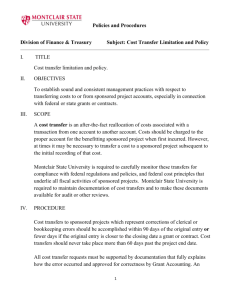

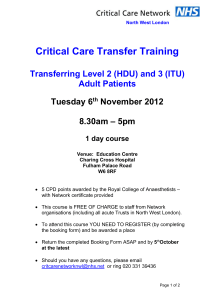
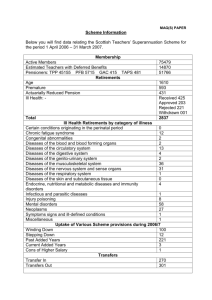
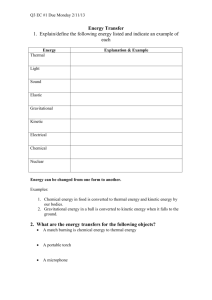
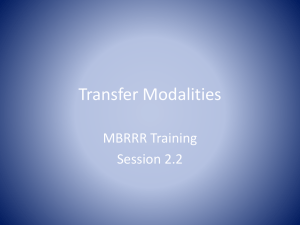
![This article was downloaded by: [International Food Policy Research Institute ] On: 03 December 2014, At: 11:16](http://s2.studylib.net/store/data/011106877_1-9f87028dc062bb786e388b3056fe3f16-300x300.png)